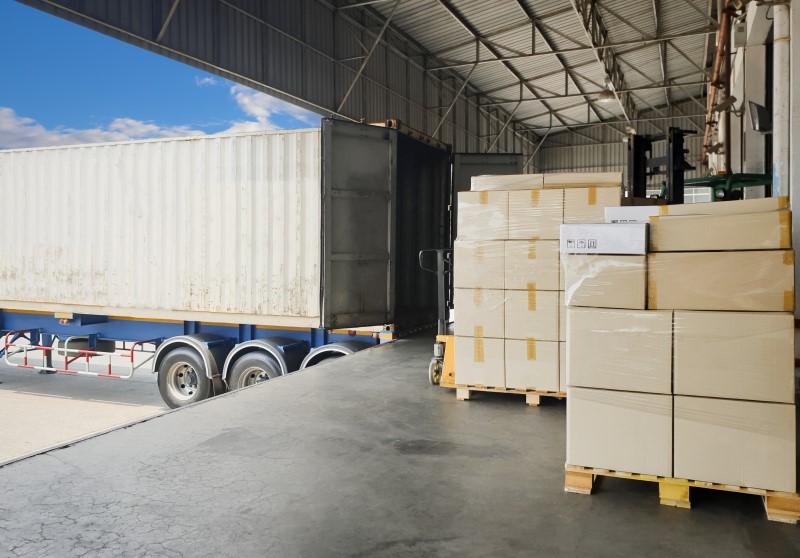What 3PLs Need to Understand Beforehand
Supply chain management has historically been a heavily commoditized industry that involves several unique services. Most businesses would often form close bonds with their customs broker, maintain a close relationship with their distribution warehouse, and pit freight forwarders against each other for the most competitive shipping rates. However, trade lanes have become increasingly volatile due to global crises and geopolitics, while ecommerce and omnichannel fulfillment businesses have grown exponentially, bringing new competitors into the market. As the industry evolves, many third-party logistics (3PL) providers are looking to expand into fourth-party logistics (4PL) networks to offer their customers a sticky, end-to-end supply chain service. Offering all-inclusive services enables 4PL networks to leverage a full suite of services that offer competitively priced solutions by distributing internal costs across the business.
In today’s competitive marketplace, 3PLs looking to build a 4PL network should focus on building strong relationships with a variety of service providers. Yet, they need to continue to build enough volume to procure competitive contracts on their own while augmenting their networks with software.
1: Global Shipping and Transportation Networks
Transportation is a volume-based business. The more shipments a business has, the better rates they can procure. This makes focus even more important. As 3PLs look to expand into 4PL technology for their customers, it is important to focus on key trade lanes to build volume.
As a best practice, warehouses should use more than one carrier or service provider in case one of them is unable to procure space during peak shipping seasons. This applies to ocean freight, air freight, over the road (OTR), and domestic intermodal services.
It is also important for 3PLs to keep in mind that most distribution centers in European and North American markets tend to import more goods than they export. Any 4PL network that can offer export volume to origin countries are helping carriers offset the cost of bringing transportation equipment (mostly ocean freight containers) to high-demand locations. Export volume can be used to help procure lower rates for customs on the import side.
Global interconnectivity and dynamic trade relationships make customs brokers and trade lawyers an indispensable resource for businesses shipping products around the world. Competitive trade environments in recent years have seen increases in tariffs between countries like the United States, China, and Europe, not to mention updates to agreements between the United States, Mexico, and Canada. Partner 3PLs across these countries will need to adhere to these regulations while also still providing the same level of services their customers have come to know and expect. The ability to support businesses with legal advice in the face of uncertainty or changing regulatory environments saves importers money and allows them to remain more competitive.
Most costs associated with transporting, storing, and distributing products are seen as overhead for businesses. These costs factor into a landed cost that is incorporated in a product’s sell price. This means most services between the manufacturer and end consumer impact the final price of goods in the marketplace. Historically, this translates into cost conscious businesses looking for the lowest price in what has usually been an interchangeable service.
2: Pricing Services Across the 4PL Network
When setting up a 4PL network, service providers need to put themselves in their customers’ shoes. Most products are produced overseas and transported to consumer markets for sale and distribution. This process includes a variety of freight services, customs brokerage, storage, and final mile distribution --all of which are costs that have to be recuperated in the sale price of the product, along with other operational expenses outside of the supply chain itself.
Without large volumes, it is unlikely that any new 4PL provider will be able to win business on pricing alone. Importers are already accustomed to piecing together supply chain solutions across multiple providers. However, packaged deals can offer cost savings in other services. For instance, a 4PL provider can use healthier margins from other services (like warehousing) to absorb some of the costs of less competitive services like freight.
Many 3PLs already have strong small parcel volume that allows them to procure lower rates than many of their customers. This can also be bundled with other charges to become more competitive and offer an all-inclusive solution.
3: Software Integrations for Network Management
Businesses are becoming increasingly accustomed to software solutions that manage many of their needs. Outside of a custom-built ERP system, it is difficult to find a single platform that will manage the supply chains of multiple businesses from manufacturer to the end consumer.
It’s important to find software solutions that can easily connect with one another through an API to pass information. By leveraging the right tools, like order management systems (OMS), warehouse management systems (WMS), accounting, and transportation management systems (TMS), small 3PLs can use a vast array of technology solutions to manage their supply chain network in their transformation to a 4PL provider.
4PL Network Considerations
By following these three steps, 3PLs can extend their offerings to build out their own 4PL network. First, focus on building transportation volume along key trade lanes while building out a trusted network with which to service their customers. Next, important advisory services in the form of customs brokerage and trade law will give businesses a level service to reproduce elsewhere. Finally, pricing for many 4PL services might be competitive early on, however 4PLs can work around this by spreading costs of services across the supply chain to offer customers attractive all-in supply chain management rates.
Subscribe to the Extensiv blog to learn more about the changing 3PL and 4PL landscape.
-
You’ll read about:
Be the first to know
Subscribe to our newsletter





